bullying
Multiple types of harassment: associations with emotional well-being and unhealthy behaviors in adolescents
Abstract Purpose: To explore relationships between harassment (i.e., race-, weight-, socioeconomic-status (SES)-based, and sexual) and health-related outcomes, including self-esteem, depressive symptoms, body satisfaction, substance use, and self-harm behavior, among diverse adolescents. Method: Cross-sectional analysis using data from a population-based study of adolescents participating in Eating and Activity in Teens 2010 (EAT 2010) (n = 2,793; […]
Indicators of victimization and sexual orientation among adolescents: Analyses from Youth Risk Behavior Surveys
Abstract Objectives: We used nuanced measures of sexual minority status to examine disparities in victimization and their variations by gender, age, and race/ethnicity. Methods: We conducted multivariate analyses of pooled data from the 2005 and 2007 Youth Risk Behavior Surveys. Results: Although all sexual minorities reported more fighting, skipping school because they felt unsafe, and […]
Sexual-orientation disparities in school: The mediational role of indicators of victimization in achievement and truancy because of feeling unsafe
Abstract Objectives: We examined sexual-orientation identity disparities in truancy and academic achievement, and the mediational role of victimization in a large high-school sample. Methods: We utilized pooled data, measuring sexual identity, from the 2005 and 2007 Youth Risk Behavioral Surveillance System Surveys. Multilevel logistic regression modeling estimated the odds of low grades and truancy because of feeling […]
The success of gay–straight alliances in Waterloo Region, Ontario: A confluence of political and social factors
Abstract This article outlines how gay–straight alliances (GSAs) work to connect youth with community resources, and outlines the political and social context of GSAs in Waterloo Region, Ontario, Canada. Fifteen individuals (youth, teachers, and a lesbian, gay, bisexual, transgender, and queer [LGBTQ] youth service provider) participated in interviews about the role of GSAs in creating […]
Buried above ground: A university-based study of prevalence and risk/protective factors for suicidality among sexual minority youth
Abstract This study examined differences in suicidal behavior between lesbian, gay, bisexual, transgender, and queer/questioning (LGBTQ) and non-LGBTQ university students as well as investigated the importance of risk and protective factors in the prediction of suicidality between these two groups. A total of 1,205 university students participated in the survey. Findings show, compared to non-LGBTQ […]
Population-level evaluation of school-based interventions to prevent problem substance use among gay, lesbian and bisexual adolescents in Canada
Abstract Objective: This study examined whether students’ odds of recent substance use were lower in the presence of gay-straight alliances or explicit anti-homophobia policy that had been established at their school recently, or at least 3 years prior. Methods: We analyzed a population-based sample of students in grades 8 through 12 from the British Columbia Adolescent Health Survey of 2008 (weighted N = 21,708). We […]
Reducing homophobia in high school: The effects of “The Laramie Project” play and an integrated curriculum [abstract]
Purpose: Homophobic attitudes and resulting bullying have been linked to school and health problems for sexual minority youth, including suicide. While school-based policy and curricular interventions to reduce homophobia have been suggested, only correlational evidence has been published to date. This quasi-experimental longitudinal study examined the effects on homophobic attitudes in an urban high […]
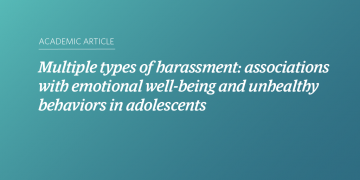
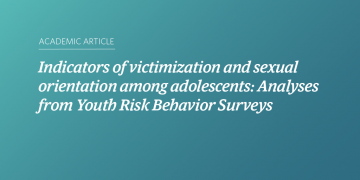
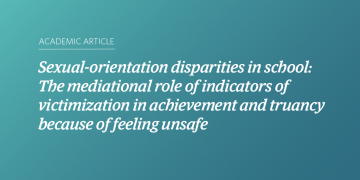
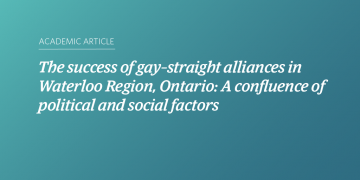

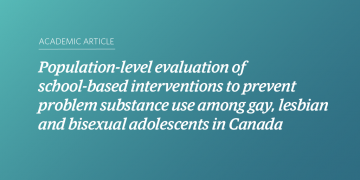
![Teal and blue gradient background with white text that says “Reducing homophobia in high school: The effects of “The Laramie Project” play and an integrated curriculum [abstract]”](https://www.saravyc.ubc.ca/files/2011/08/Reducing-homophobia-in-high-school-The-effects-of-“The-Laramie-Project”-play-and-an-integrated-curriculum-abstract_Twitter-360x180.png)

